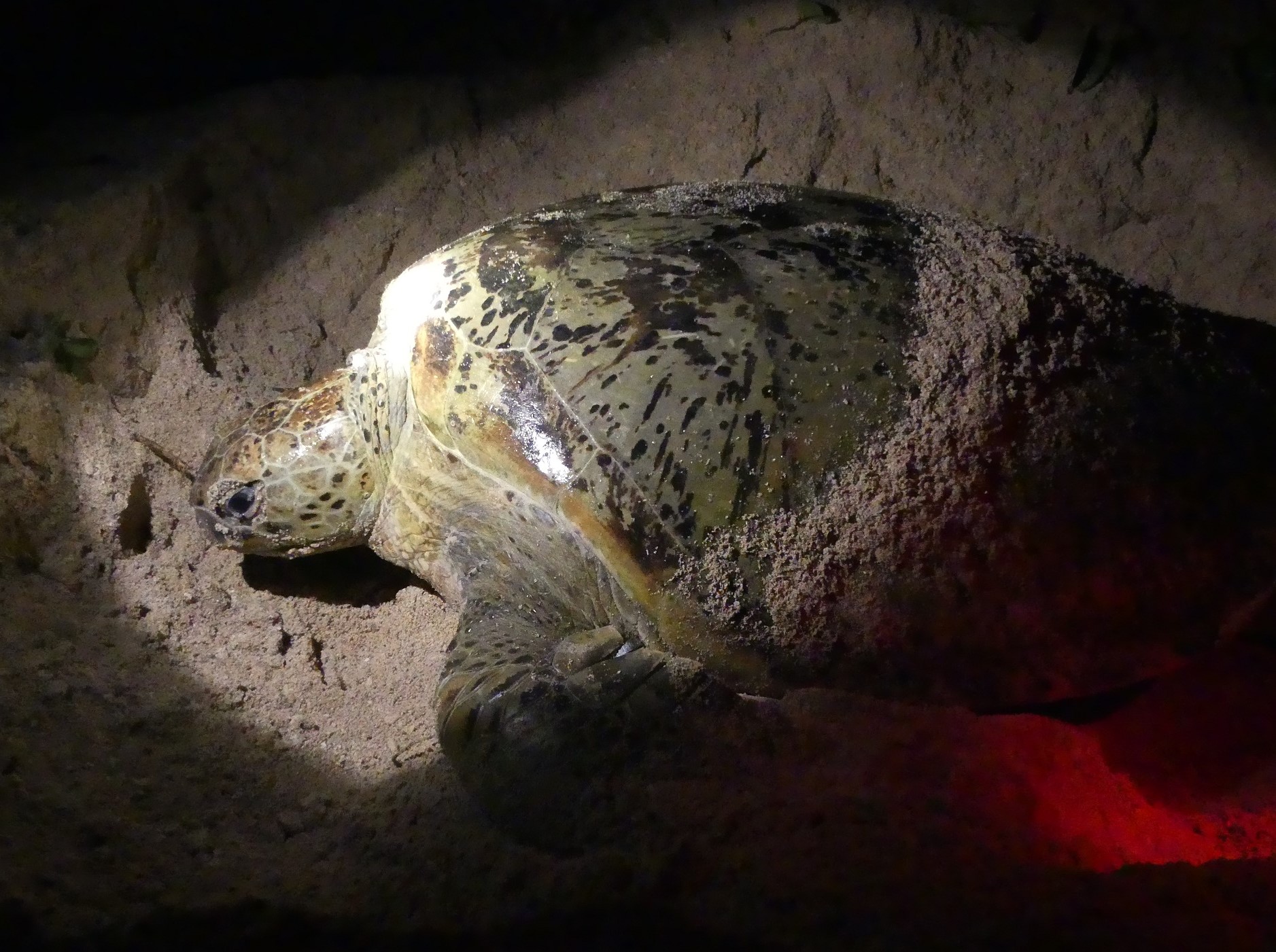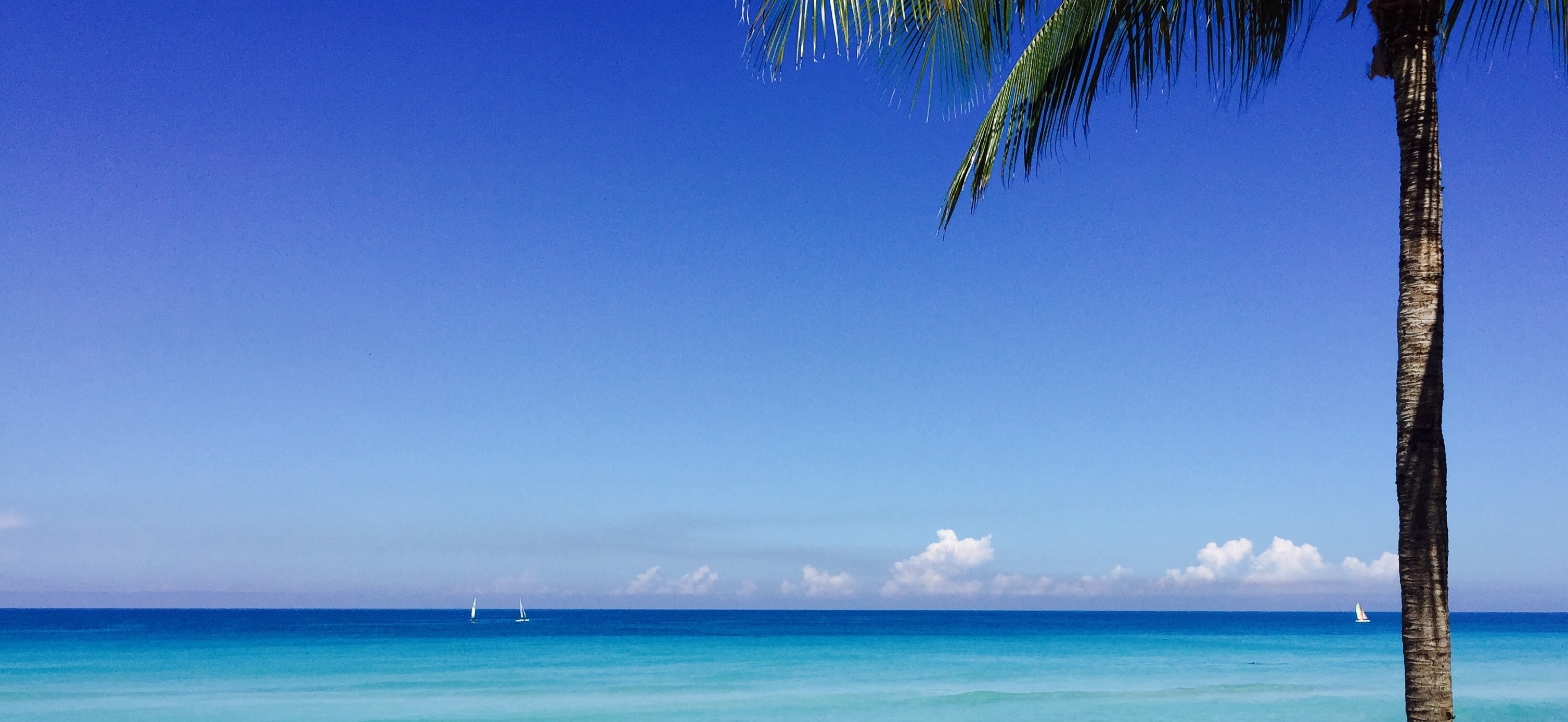The second part of our short time in Borneo would be spent on a very small island called Seligan Island, just off the coast of Sabah. Known as Turtle Island, as the name suggests, it is one of three islands in the region where Hawksbill Turtles and Green Sea Turtles come to nest.
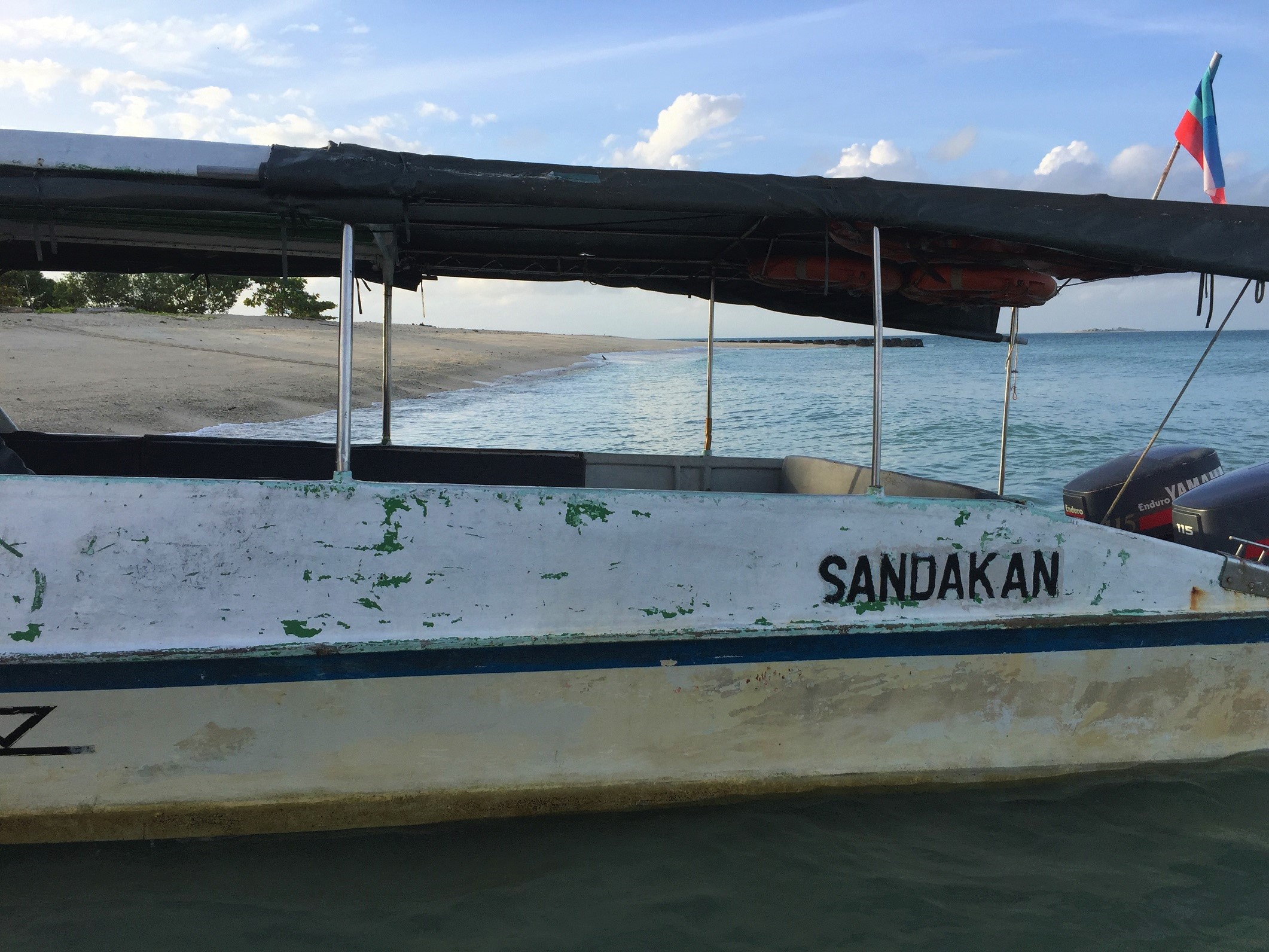
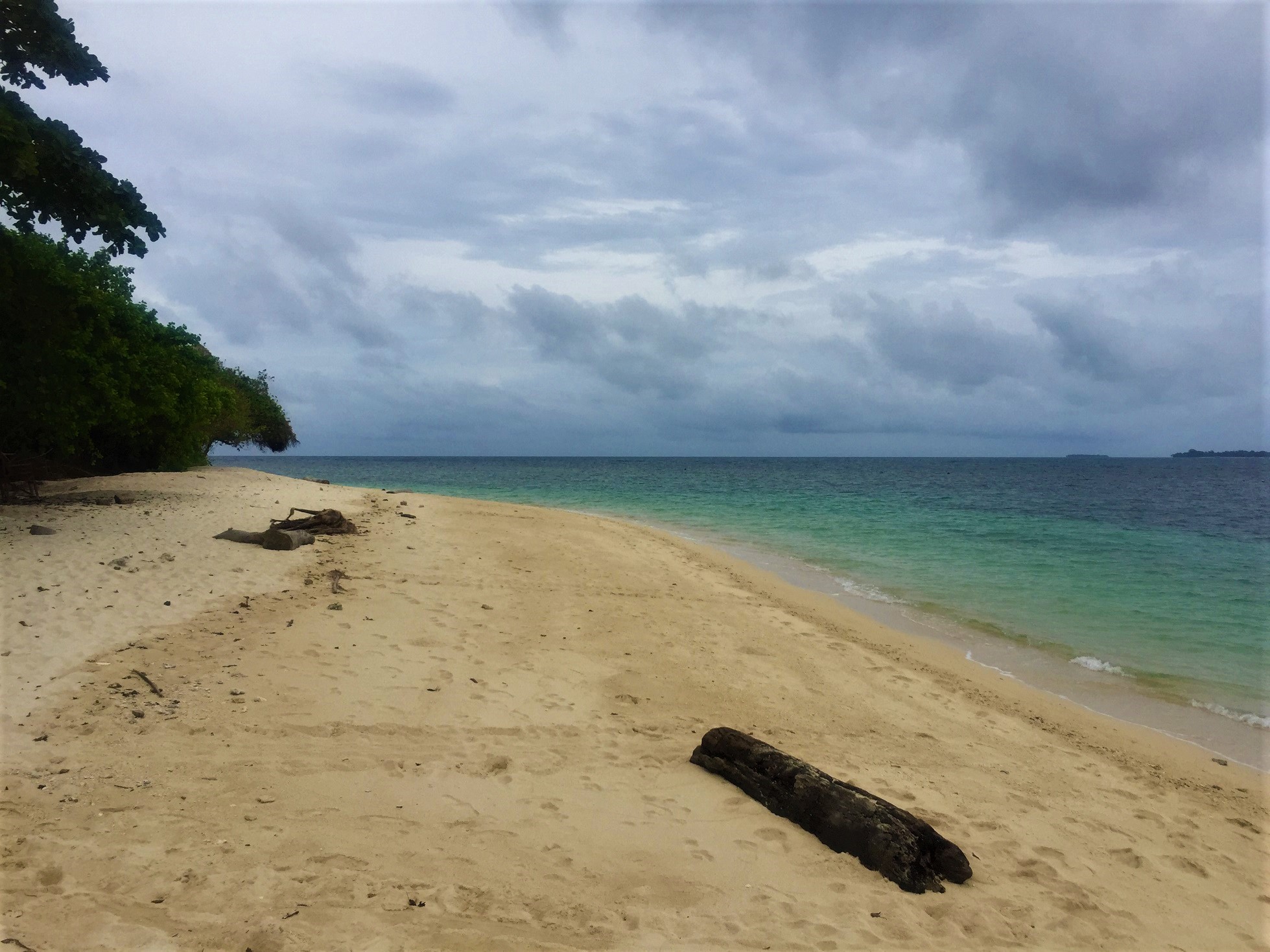
Our home for one night only
Our guide, Rusli (as in Bruce Lee he quickly pointed out) was totally in love with Borneo and his excitement about seeing turtles lay their eggs (which he has seen thousands of times before) was infectious. Seligan Island is one of three islands around Borneo where these turtles nest but the only one that accepts visitors. The island also only has capacity for a maximum of 50 overnight guests at any given time as the focus is primarily on conservation and protection of the species. During our visit there were about 22 tourists and four guides, so not too large a group.
Walking around the tiny island it was incredible to see all the work they are doing for the turtles. All the turtle eggs laid on the island are taken by rangers and placed in man-made holes similar to a turtle nest, to protect them from predators – at least until the baby turtles get to sea. There were hundreds of these hatching “nests” in the two hatching enclosures, each with the details of the nest and number of eggs.
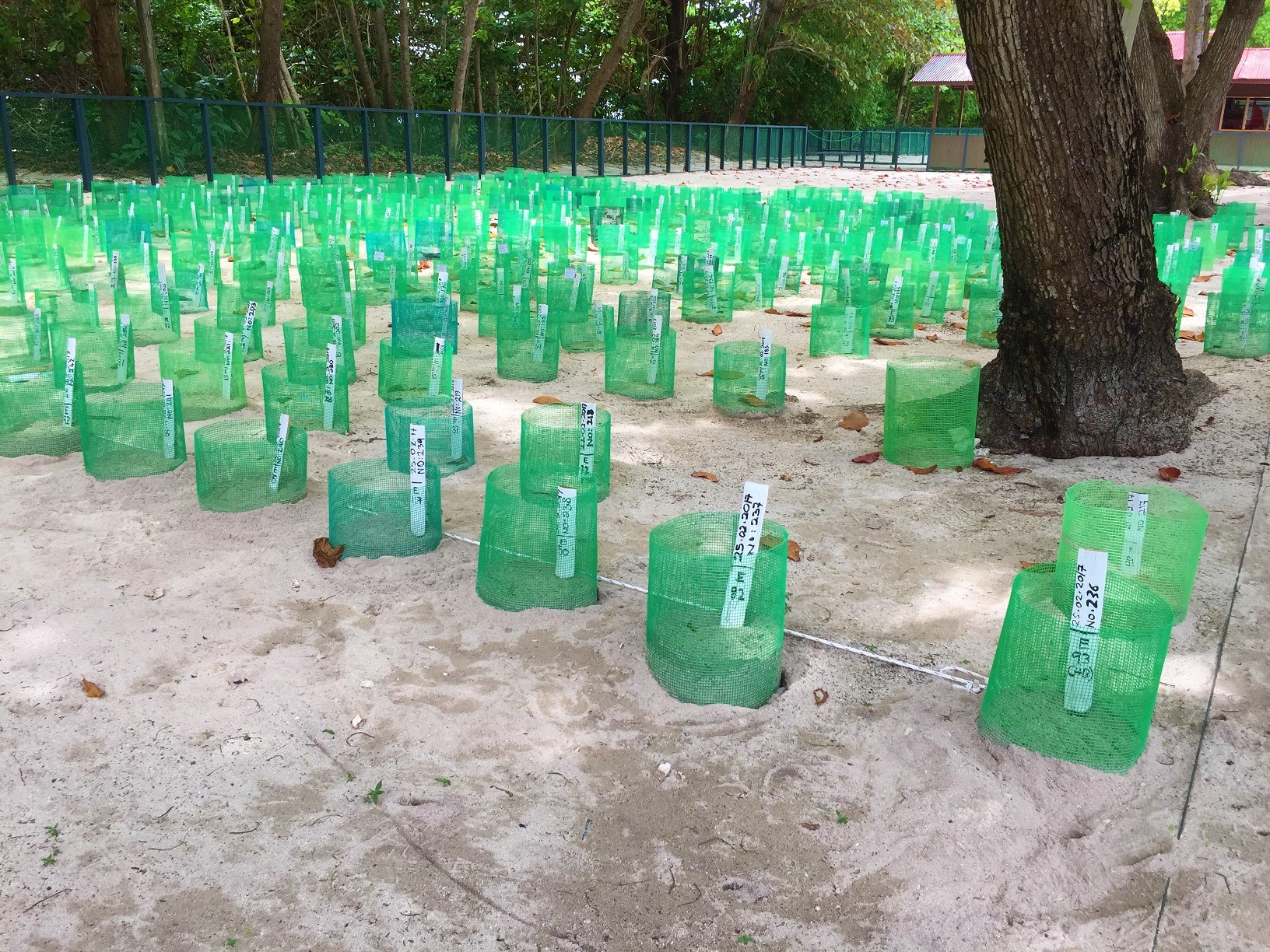
One of two hatching enclosures on the island
Interestingly the sex of turtles is determined by the temperature of the egg while incubating so some nests are purposefully kept in the shade. Above 24C most hatchlings are female and below 24C, the eggs generally produce males – easily remembered by the saying “Hot Chicks, Cool Dudes!”
The previous night, seven Green Sea Turtle made landings on the island, although only five proceeded to make a nest, laying 380 eggs in total. Hawksbills are much rarer. During 2016 only 63 Hawksbill turtles nested on the island, while over 4,000 Green Sea Turtles laid their eggs here.
To minimise disruption to the animals, the rangers only allow visitors to see one female per evening, regardless of whether or not she stays very long. So there was no second chance if we missed it. Also, because she can take anything between five and 15 minutes to lay her eggs, we had to get to her as quickly as possible.
So we had a very simple game plan: sit around in the restaurant area and wait for the call. Derek and I spent the evening drinking coffee and doing crossword puzzles. At 22.55pm someone shouted “Turtle Time”! We were on our feet in seconds and quickly made our way over.
A huge Green Sea Turtle was sitting in her nest and quietly laying her eggs in the enormous hole she dug earlier. Turtles go into a sort of “trance” when they lay their eggs so she wasn’t disturbed by the small crowd forming. Luckily for us, she eventually laid 111 eggs so we spent at least 15 minutes at her nest.
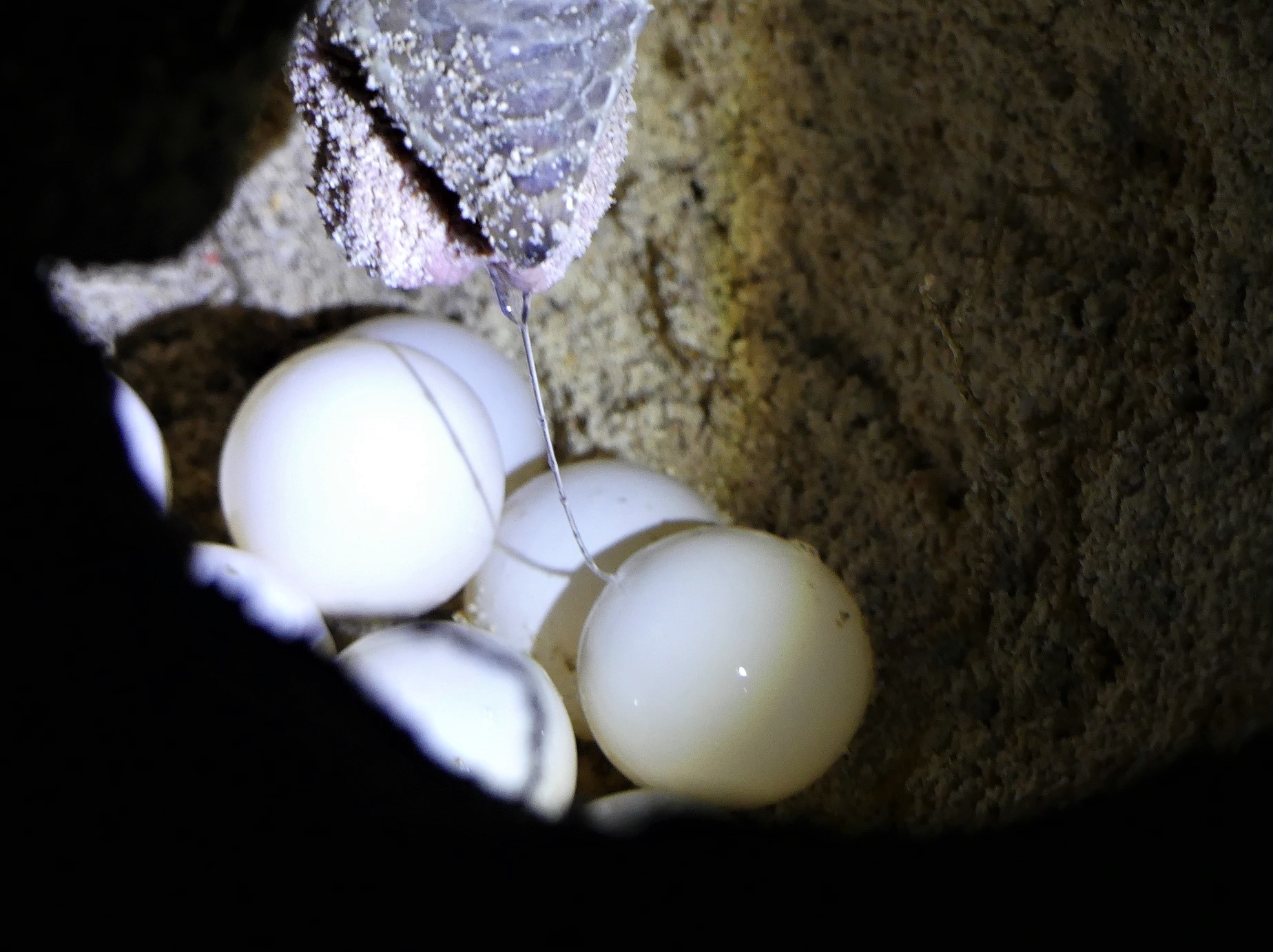
Once she was finished, the ranger tagged her as she was a new mother visiting one of the islands for the first time. They also took the opportunity to clean her shell from barnacles that could kill her if left attached. We took our leave when she started flinging sand at us as she covered her nest.
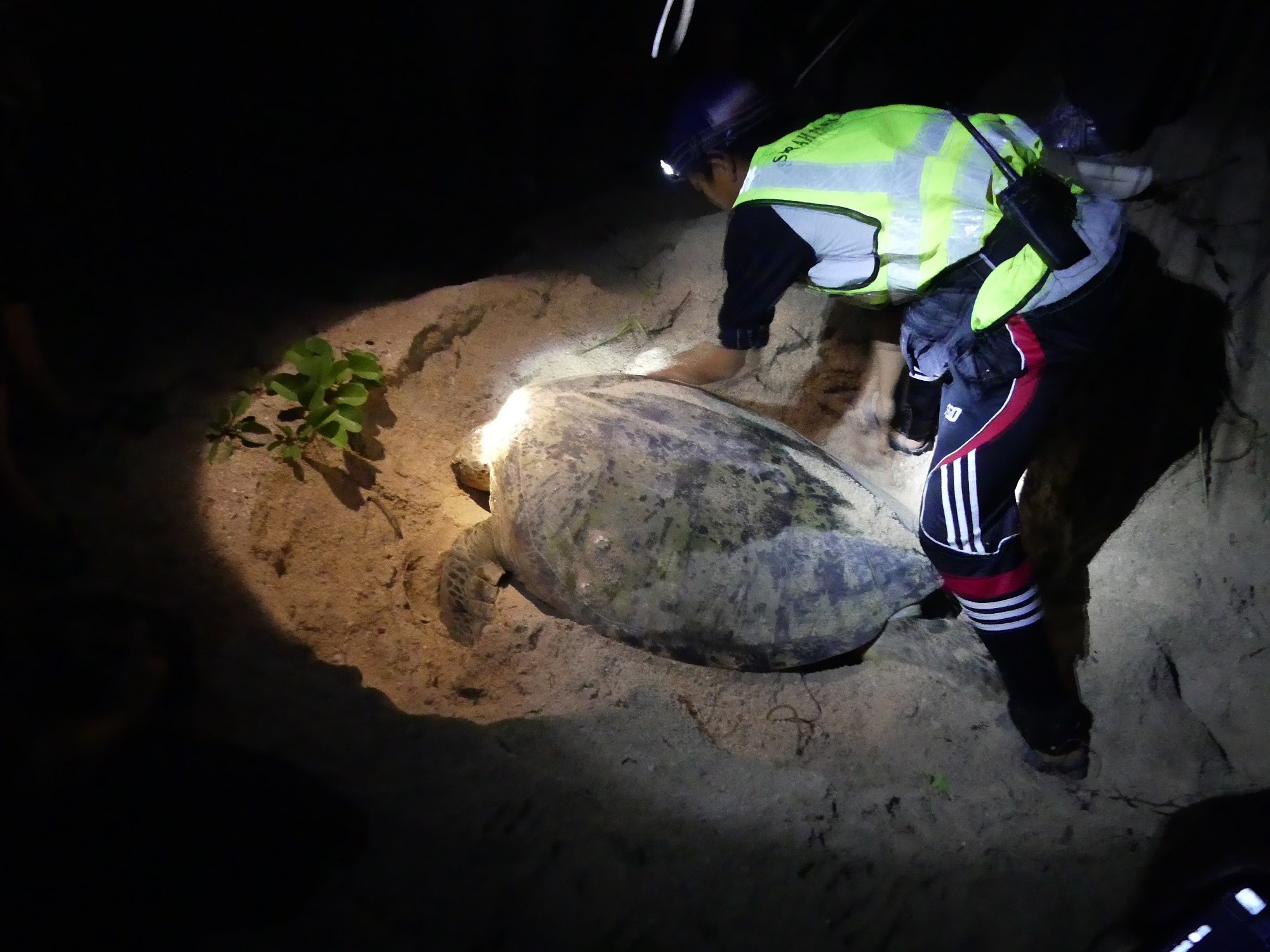
Two of the barnacles are clearly visible on the left side of her shell
The rangers had about an hour to bury the eggs in their man-made nests before they would be ruined so we quickly headed to the hatching area, watching them place the eggs carefully into the freshly dug hole.
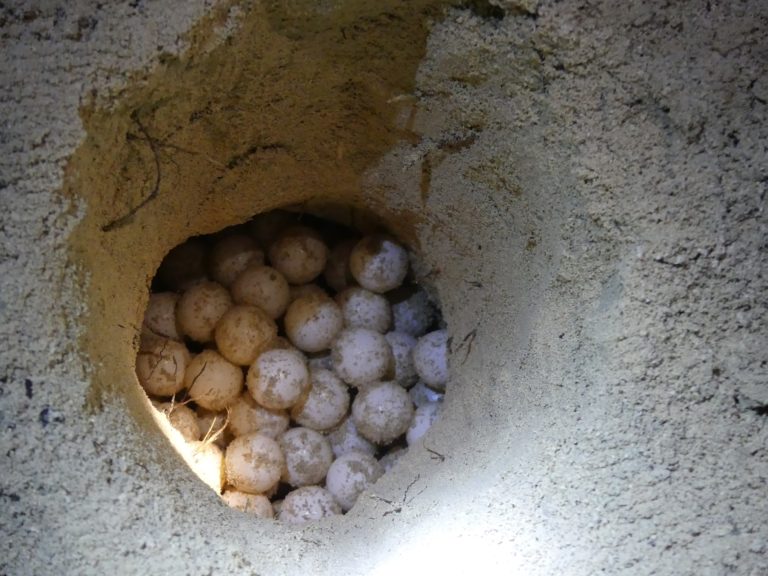
All 111 eggs safely buried in their new “nest”
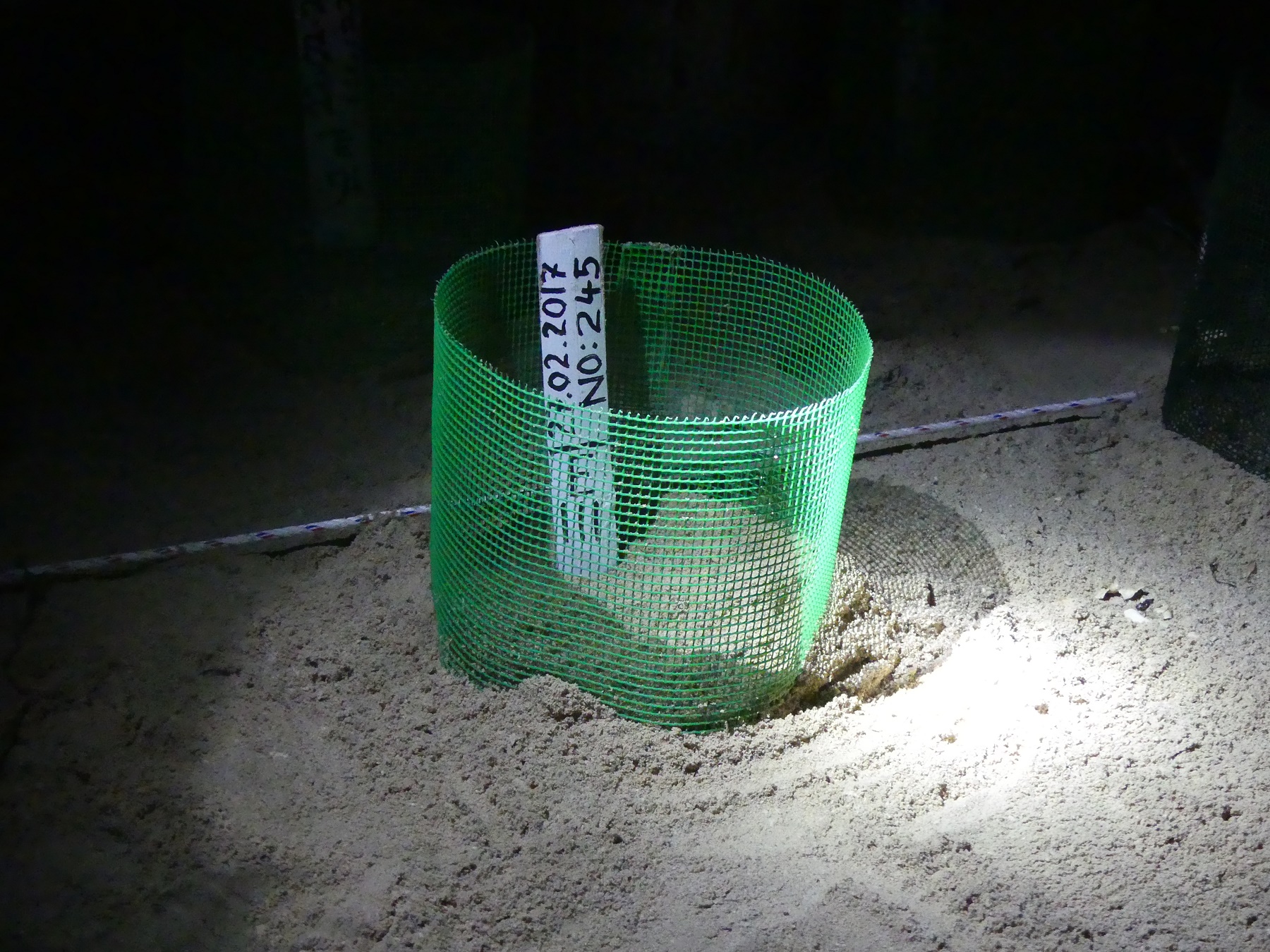
We also had one more experience in store. A few of the eggs that were laid about 60 days ago had hatched earlier that evening. We would be releasing the hatchlings into the ocean! A total of 46 incredibly tiny turtles were wiggling around in a basket, desperate to get to the water and it was incredible to watch them run as fast as their tiny flippers could carry them to the sea.
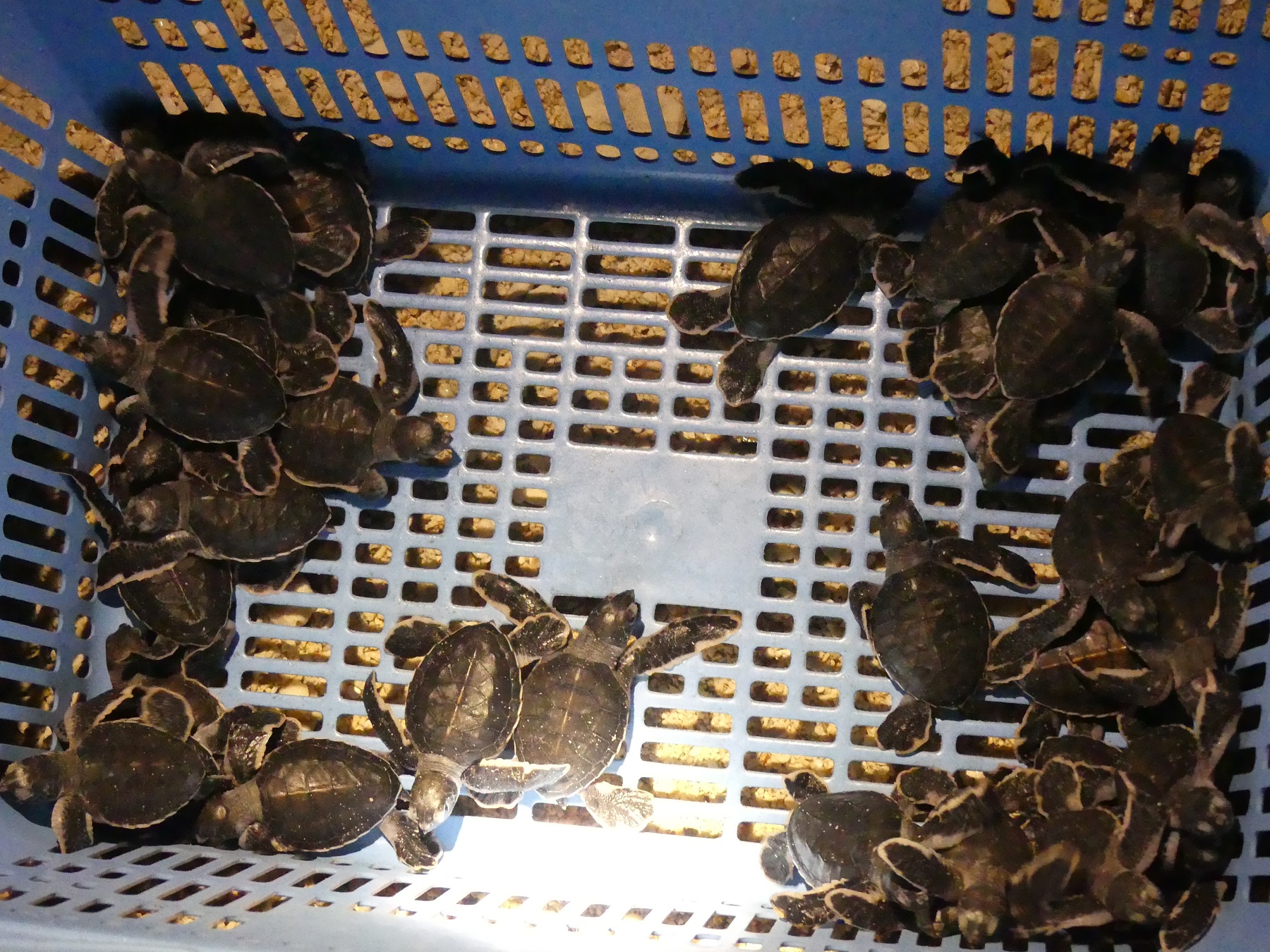
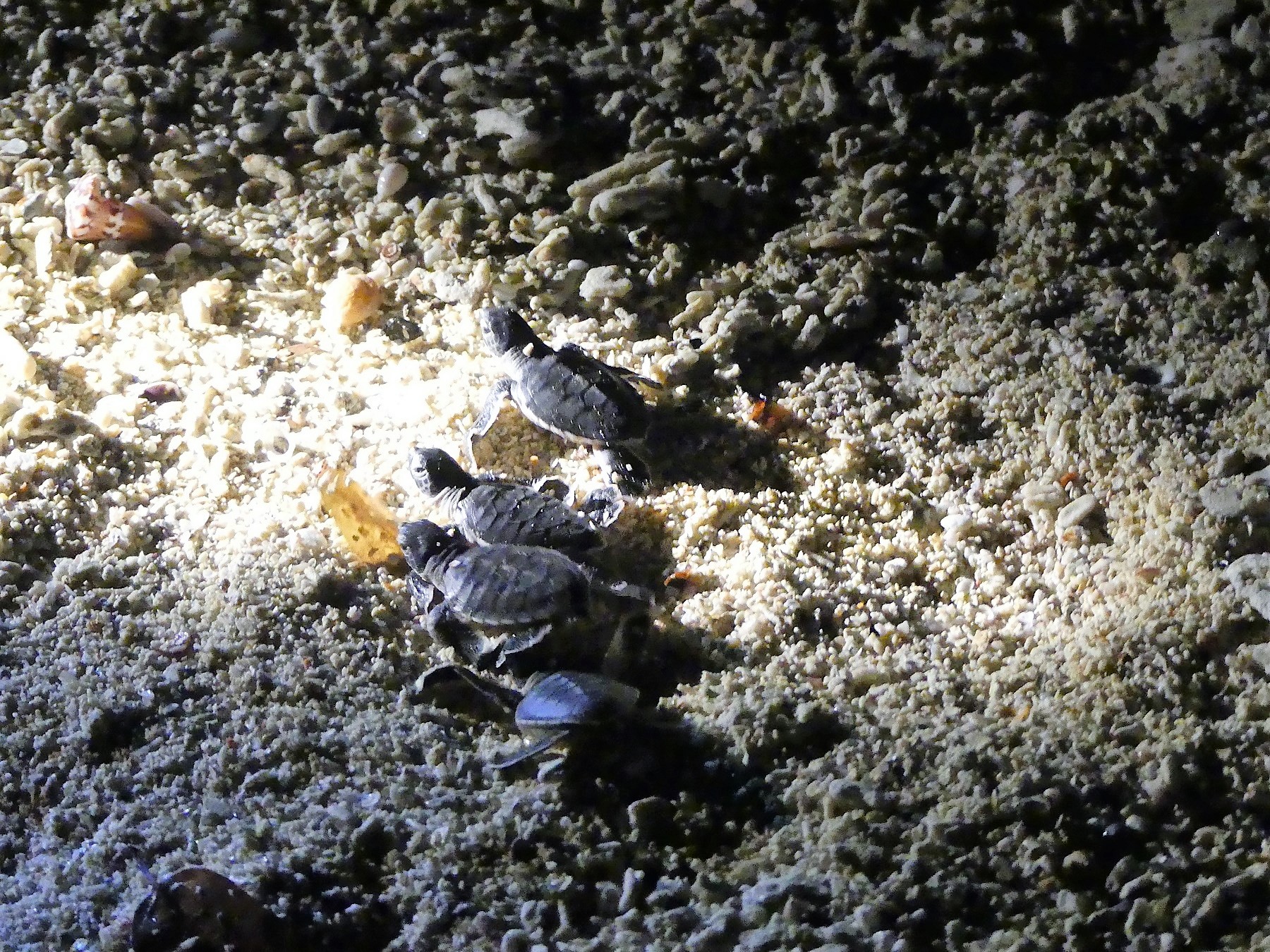
Sadly, only 1-3% of baby turtles make it to adulthood, due to them being easy pray for various sea, land and air animals. So I hope we weren’t just releasing shark food… And hopefully the conservation efforts of the team in Borneo contribute to the turtles’ numbers rising steadily.
In the morning we realised just how lucky we were. Not only did we get to witness a new mother nest on the island, but she was only one of two turtles that nested that evening. In fact, the other two nearby islands that regularly receive turtles had no visits whatsoever. What a privilege.
